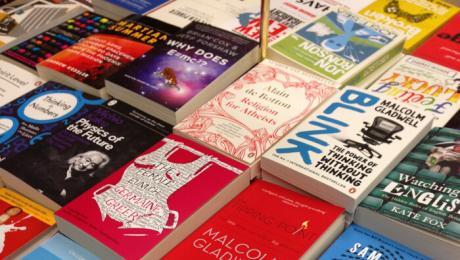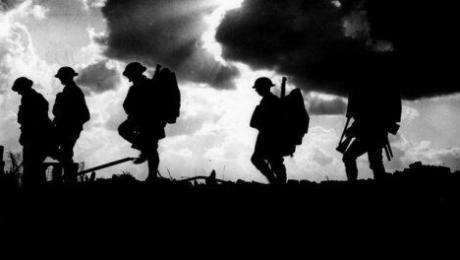Genres of the Most Popular Self-Published Fiction Books
The most popular publishing genres also show up as the most popular in self-publishing. When books are read for entertainment, readers focus on genres they like. Writers who want to self-publish and make a living at it should consider writing in the genres that have large readerships.
Half of Amazon’s self-published e-book bestsellers are category romance, science fiction, and fantasy novels! Their readers are devoted to these easy-to-read and engrossing novels. They offer sheer escapism. And, readers of these genres have clearly defined interests that authors can appeal to.
Romance is the most popular genre. Happy endings and escapism have made romance an enduringly popular genre. Science fiction, fantasy, mystery and crime are also leading genres.
The Romance Category
Romance as a publishing genre has the lion’s share. Romances have forty percent of the market share of Amazon’s e-book sales. Like other genres, romance has subgenres as well such as contemporary romances, historical romances, romance mystery, Christian romance, westerns, and erotica. Even though “Fifty Shades of Grey” is in the erotica genre, erotica actually has a very small market share of the romance genre.
Bestselling romance writers, like Lindsay McKenna, are able to move from traditional publishing houses to self-publishing with some success. McKenna started self-publishing in 2014, after leaving Harlequin. In 2015, she joined Kensington; however, she did not leave self-publishing behind.
Science Fiction and Fantasy
Almost half of the science fiction and fantasy books sold on Amazon are self-published. Books in this genre invite readers to immerse themselves in alternate universes.
The Mystery and Thriller Categories
Mysteries and thrillers also sell very well. Readers who enjoy problem solving and getting their hearts thumping for entertainment enjoy this genre.
The successes of self-published authors indicate there is room for many more such success stories. Books by Deborah Bladon, Vi Keeland, Tijan, and Penelope Ward made it to the New York Times bestseller list for digital books in 2015.
The self-publishing option is becoming more mainstream. Crossover authors are on the rise in both traditional publishing and self-publishing. These hybrid authors make the most money, according to a survey by Digital Book World. Crowdfunding remains a popular platform for publishing projects. If you are worried about money, explore the crowdfunding option. Keep in mind that to build readership, many series book authors have offered the first book for free.
For any genre, marketing is the key to success. If you do not want to write a genre book, you can remain true to your vision and see how it goes. Readers will notice if you have to force your writing. Consider generating some crossover appeal, if making a living as a writer is your goal.
- Published in Writing & Editing Resources
Writing Style, Plot, Pacing, and Book Marketing Depend on the Selected Genre
Every genre has distinct rules and reader expectations. Readers often select their reading material by genre. Choosing the genre helps in plotting, constructing the appropriate writing style, and selling the book to the right audience.
Publishing success depends on the category in which the book is marketed. For instance, a general fiction book will not sell well as a romance, because the plot will disappoint reader expectations. Even when genres are similar, the plot will determine which category attracts the most readers. Readers of some genres have firm expectations, such as a happy ending in a romance book.
Genres and Pacing
Even though mysteries and thrillers are similar genres, one is more plot-driven than the other. In thrillers, more time is needed to create the scenario; however, in mysteries the end has already transpired. This means writing a thriller involves more world-building, and mysteries can focus more on character development. Thrillers are also faster-paced. The informative Mystery Writers of America is a good source for tips.
Thrillers and suspense novels involve trying to prevent something very bad from taking place. These plot-driven books do not allow the writer to dwell much on character development. In the hybrid mystery–suspense genre, the pacing is quicker, but a crime has already occurred. However, the rush to prevent something from happening remains and quickens the pacing. Check out the informative International Thriller Writers website for more information.
Fantasy and science fiction involve world-building, and the more world-building in the novel, the longer it is. The Science Fiction and Fantasy Writers of America provides more information. For horror books, the Horror Writers Association is a good resource.
In character-driven literary fiction, the pace is slower, and the plot reveals the personal evolution of the characters. The choices made at critical junctures challenge the protagonist’s character. This is why plot remains important, but character development is the dominant factor in literary fiction.
Writing Style and Genres
Skillful writers use precise language, but the words contribute to sentence fluency—the flow of words in sentences. Skillful writers use different types of sentences with different sentence flows and lengths to achieve the desired effects. They know that variation prevents attention-killing monotony.
Capable writers arrange the words in sentences and use sentence structure and sentence variation for optimal effect. However, these wordsmiths write in the context of the genres they select. In literary fiction, for instance, the emphasis is on the prose. In faster-paced genres, the writing style uses more action words.
Plotting and writing become easier once the genre is selected because genre-specific rules and reader expectations discipline writers. Understanding the ground rules means knowing which critical elements are necessary. The rules and expectations also help writers to write something that sells well.
- Published in Writing & Editing Resources
The Art of Turning a Book into a Screenplay
How does a writer create a screenplay from a manuscript? The writer needs to know how best to transform the content of the manuscript so that it is suitable for the screen. A writer needs to think outside the box because writing a screenplay requires a different skill set.
From a Solitary Creator to Multiple Creators
The process of screenwriting also involves collaboration. It is not the same as having an editor refine the manuscript before publication. The optimal transformation of a book into a screenplay requires a different approach.
A screenplay is also the primary stage of a collaborative process that may involve several rewrites as the material is adapted for the screen. The screenplay as initially scripted is merely the blueprint for the movie that unfolds during a creative collaboration.
Differences between Book and Screenplay Writing
The first difference is that readers read a book to absorb the words as written, but the movie audience absorbs the content from the visual and spoken words on screen. Moviegoers will not discover the inner workings of the characters’ minds through prose; they can only figure out what is visible through actions, dialogue, facial expressions, and movements of the actors.
Cutting the Content to the Bone
Typically, a single page of a script is the equivalent of one minute on film. As movies normally run for two hours, this means the written screenplay will be about 120 pages in length. Characterization may shift or alter in the storytelling process. In some movies adapted from books, protagonists have been combined to create a new screen character.
Power Passes to Moviemaking Professionals
The novelist will have to rely on professionals experienced in the movie-making process to bring the written words to life. Unless the screenwriter is also the director, producer and executive producer, power is in the hands of the moviemaking professionals.
The director’s vision defines what is put on film, but the director is selected by the producer. The interpretive role is in the hands of the actors who are cast to embody the characters as described in the book. Their skill can create multidimensional characters.
Ultimately, the director and producer decide which parts of the script to keep and which they will ignore or discard. They may require the writer to revise some parts or choose another scriptwriter to do it.
The author is the prime creator of all that appears in a book’s content. As a screenplay writer, an author participates in the unfolding creative process of creating a movie. Often what is depicted in the movie is quite different from the book it is inspired by or based on. Optimally, the screen version lives up to the standard set by the original material.
- Published in Writing & Editing Resources
Why Was British WW I Poetry so Memorable?
In the annals of poetry, the First World War is known for some of the most moving war poetry ever written. The soldier-poets of the First World War left a deep mark. These war poets were exemplified by Wilfred Owen (who perished a week before the end of the war), Siegfried Sassoon (fellow poet and mentor), and Charles Hamilton Sorley in whose kit was found, “When you see millions of the mouthless dead,” which posthumously became one of the most celebrated poems of this period.
New Technology of Mass Warfare Used for the First Time
Ten million soldiers died along with seven million civilians during World War I. The horror profoundly influenced those who were engaged in the war directly or indirectly. Poets expressed their feelings of loss and pain about brutalities they witnessed with the enduring power of powerfully moving and rich poetic verses.
Potent Mix of Patriotism, Disillusionment, and Educated Men
The soldiers in the trenches included many highly educated young men from civilian backgrounds, who mentally and emotionally experienced war differently. The ingredients of memorable British WW I poetry were a powerful combination of education, patriotism, and disillusionment with the experience. In this global conflict, powerful new weapons of war were used. Persistent firing for days on soldiers cowering and fighting from the trenches caused psychological trauma.
From Patriotism to Disillusionment
Rupert Brooke was the first war poet of note. His poem, “The Soldier,” captured the patriotism felt at the start of the war. But as the war dragged on, disillusionment marked the poetry of the poets who followed. Wilfred Owen and Siegfried Sassoon symbolized the pain of their generation.
The beauty and pathos of this poetry can be seen in the work of Wilfred Owen, regarded as one of the best war poets in the English language. He wrote from the heart and expressed his evolving psychological and physical experiences through the medium of poetic verse. His reputation rests on the poetry he wrote during a short period of 15 months.
Owen’s famous, “Dulce et Decorum Est.” described the horrors of a mustard gas attack. Owen was a devout Christian who wrote to his mother in 1917, a year before his death in 1918, “I am more and more a Christian.” He came to believe poignantly, “Suffer dishonour and disgrace, but never resort to arms.”
A commemorative stone inscribed with the names of 16 of the representative poets of the First World War was unveiled in Westminster Abbey on November 11, 1985. The quote inscribed on the stone was taken from a poem of the quintessential war poet of the era— Wilfred Owen. In Britain, poetry defined what people understood about the experience of the Great War as expressed by those who were on the front lines.
- Published in Writing & Editing Resources




